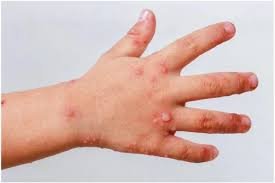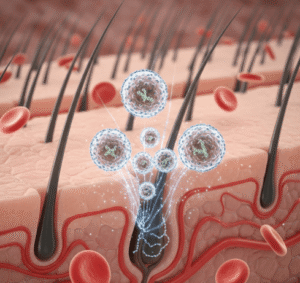Overview
Coxsackievirus infection is a viral illness caused by Coxsackieviruses, part of the enterovirus family. It commonly affects children but can also infect adults. The virus can lead to mild symptoms like fever and rash or more serious complications such as viral meningitis, myocarditis, or hand, foot, and mouth disease (HFMD). In South Korea, Coxsackievirus outbreaks are monitored, especially in daycare centers and schools.
What is Coxsackievirus Infection?
Coxsackievirus infection occurs when the virus enters the body, typically through the fecal-oral route, respiratory droplets, or direct contact with contaminated surfaces. It is highly contagious and can spread quickly among children in crowded environments. The infection can be classified into:
- Group A Coxsackievirus: Often causes hand, foot, and mouth disease, herpangina, and rashes.
- Group B Coxsackievirus: Can affect the heart (myocarditis), pancreas, and central nervous system.
Symptoms
Symptoms vary depending on the strain and severity of the infection:
Common Symptoms:
- Fever
- Sore throat
- Loss of appetite
- Fatigue
- Headache
Hand, Foot, and Mouth Disease (HFMD):
- Red spots or blisters on hands, feet, and inside the mouth
- Painful mouth ulcers
Herpangina:
- Small blister-like sores in the mouth and throat
- Sudden high fever
Severe Complications (rare):
- Viral meningitis: headache, neck stiffness, nausea, and sensitivity to light
- Myocarditis: chest pain, irregular heartbeat
- Encephalitis: neurological symptoms
Causes
Coxsackievirus infections are caused by exposure to the virus through:
- Direct contact with infected persons
- Contaminated food or water
- Respiratory droplets from coughing or sneezing
- Contact with surfaces touched by infected individuals
Risk Factors
- Young children under 5 years of age (highest risk for HFMD)
- Individuals in daycare centers or schools
- Weakened immune system
- Poor hygiene practices
- Crowded living conditions
Complications
- Dehydration due to painful mouth sores
- Viral meningitis or encephalitis (rare but serious)
- Myocarditis leading to heart complications
- Chronic fatigue or prolonged weakness
- Secondary bacterial infections from skin lesions
Prevention
- Frequent handwashing with soap and water
- Avoiding close contact with infected individuals
- Disinfecting surfaces and toys regularly
- Practicing good respiratory hygiene
- Keeping children home during outbreaks
Treatment Options in Korea
Treatment is mostly supportive, focusing on symptom relief and preventing complications:
- Symptomatic Care
- Fever reducers such as acetaminophen
- Pain relief for mouth ulcers
- Hydration to prevent dehydration
- Hospital Care (for Severe Cases)
- Intravenous fluids for severe dehydration
- Monitoring and treatment for myocarditis or neurological complications
- Specialized Clinics
- Pediatric infectious disease departments in major hospitals like Seoul National University Hospital, Samsung Medical Center, and Asan Medical Center provide guidance, diagnosis, and treatment.
- Preventive Measures in Schools
- Infection control policies
- Prompt isolation of affected children













